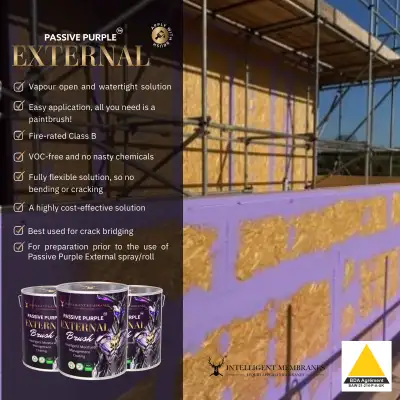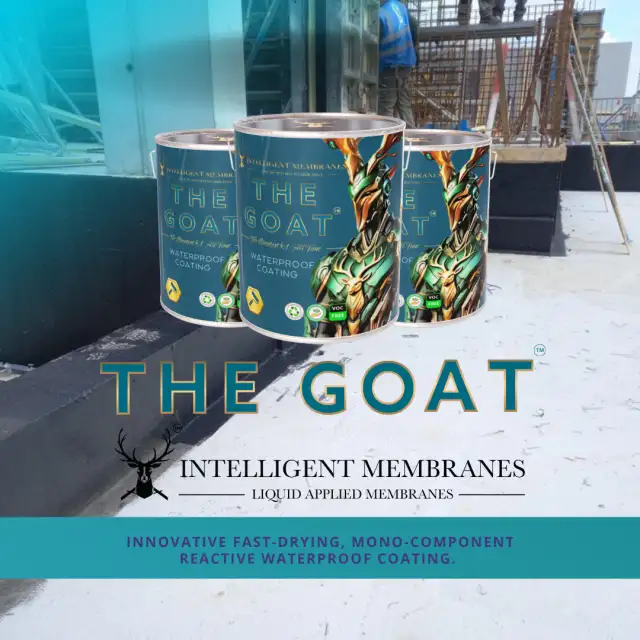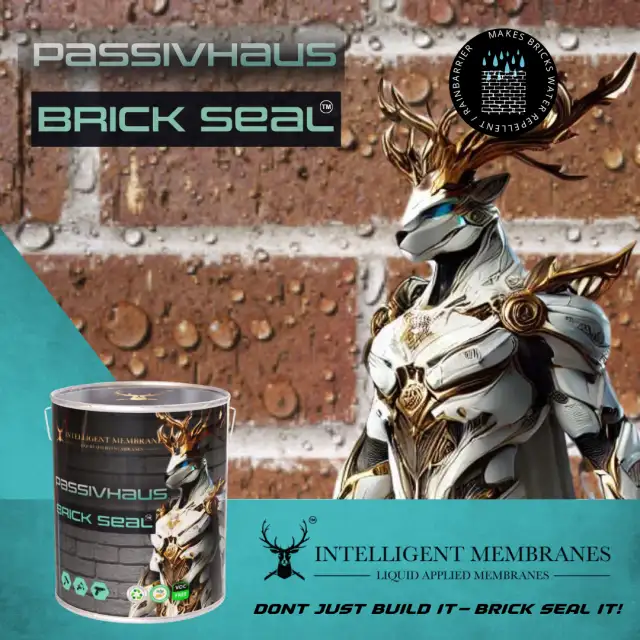We were lucky to hear from Intelligent Membranes Founder and CEO Adam White last month. Speaking from the world’s most airtight pub, Adam explained the crucial differences between internal and external barriers before walking us through some of the innovative products in the company’s catalogue.

Exploring the Differences Between Internal and External Barriers with Intelligent Membranes

At the heart of Intelligent Membranes’ product line are Passive Purple and Passive Purple External, which have been created for high-performance building in general and Passive House construction in particular. The products are liquid-applied membranes that create watertight and airtight barriers within building enclosures to enhance building performance, bringing down utility costs and helping to reduce emissions. Liquid-applied barriers eliminate the seams and gaps common when using conventional sheet membranes, which can sap performance and allow moisture to seep into assemblies. Even if a home is not built to achieve the level of performance necessary for Passive House certification, these products can still dramatically can still improve efficiency.
Both products go on any form of construction—timber, masonry, even modular—and Passive Purple is especially effective when applied directly to either retrofit or newly installed spray foam. Both Passive Purple and Passive Purple External can be applied by brush, roller, or spray. As Adam explains, the brush-applied membranes are thicker and function a bit more like tape. Consequently, they should be used in places like along seams and window installations. The roller- and spray-applied membranes can be used more broadly.

Differences Between Internal and External Barriers
As Adam explains, “Internal barriers are predominately vapor closed.” They are designed to prevent any moisture on the interior from moving into the wall assembly. With a smart barrier, like the ones produced by Intelligent Membranes, the vapor-closed barrier can recognize when there is excessive humidity and open to allow the moisture out. On the external side, the barriers are waterproof, but they are very vapor-open to allow the building to breathe. The internal barrier is often referred to as the vapor control barrier, while the external barrier is referred to as the weather barrier because it protects against precipitation and wind, while allowing breathability.
This assembly is common in colder and temperate climates, where occupants’ comfort is largely determined by the ability to keep warm and humid air on the inside and to keep out colder and drier air. When one lives in a very hot and humid climate, it may be best to have the barriers switch places. The vapor-closed barrier is placed on the exterior of the building, whereas the internal barrier is vapor-open to allow any moisture that gets into the assembly the opportunity to move into the drier, interior air.
Durability, Resiliency, and Health
Both Passive Purple and Passive Purple External are some of the most rigorously tested products on the market. While both are certified Passive House components, the durability of Passive Purple External is particularly impressive. Testing has shown that it can remain exposed to the elements for years without degrading. For areas that have extremely wet seasons where construction faces significant delays, Passive Purple External can withstand the elements for timber assemblies so long as they are completely sealed. There are instances where Passive Purple has protected building for as long as 2 years. In fact, Passive Purple External is so durable that it can be applied to public infrastructure like bridges and dams to prevent the carbonation of concrete and the rusting of the steel reinforcements inside of it.
Additionally, Passive Purple External has been designed to be fire resilient and has an Air Movement and Control Association (AMCA) Class A rating—the highest rating possible. As Adam demonstrates in the above video, even direct contact with a torch will not result in the spread of a flame. Instead, the membrane is designed to burn a layer of carbon onto the substrate that will stop the advance of the fire. As Adam notes, Passive P You can also use Passive Purple External on an interior wall as a final finish for airtightness with party walls. It also makes it more fire resilient. They also have a clear product for water tightness.
Intelligent Membranes products are also sustainable and help keep indoor environments healthy, as they are water-based and emit no VOCs. On account of being water-based, cleaning up is easy. All one needs is water and, if desired, a mild soap.
The Additional Cast of Characters
In addition to Passive Purple and Passive Purple External, Intelligent Membranes has an extensive line of products with more specified applications. Some these additional products include:

Fred
Fred is a Class A fire protective coating that offers additional layers of protection for timber-framed homes and layers of spray foam.

Poseidon
Poseidon is Intelligent Membrane’s waterproofing product for interior purposes. It’s applied as a liquid (spray, roller, or brush) prior to the installation of tiling in bathrooms and wet rooms and creates a complete vapor block.

Waterproof Blue
Waterproof Blue is like Poseidon on steroids. It can be used externally, protects against water and sun, and offers even more assurance that the barrier won’t degrade. It can be used around window assemblies and along sills to create a complete vapor block.

The GOAT
The GOAT offers the same level of protection as Waterproof Blue, but is suitable for horizontal and vertical applications, making it ideal for foundations, basement walls, basement roofs, pipe penetrations, terraces, and balconies.

Passivhaus Brick Seal
Passivhaus Brick Seal offers an invisible layer of protection that can be applied to brick and masonry to boost airtightness while curing to a colorless, natural finish. By penetrating into brickwork, masonry, mortar, or concrete, it can last for a minimum of 15 years.

Fleece Tapes
Intelligent Membranes also makes several varieties of airtight fleece tapes—including 75mm, 100mm, 150mm, and 200mm—which can be used around windows, doors, service connections, conduits, and other penetrations.
To learn more about Intelligent Membranes or these products, you can check out their website here. It should be noted that though Adam is based in the United Kingdom, Intelligent Membranes operates all over the world and has distribution centers on both coasts of North America (in Los Angeles and New York), Australia, and continental Europe. As a result, they can deliver virtually anywhere in the world in just five days!
